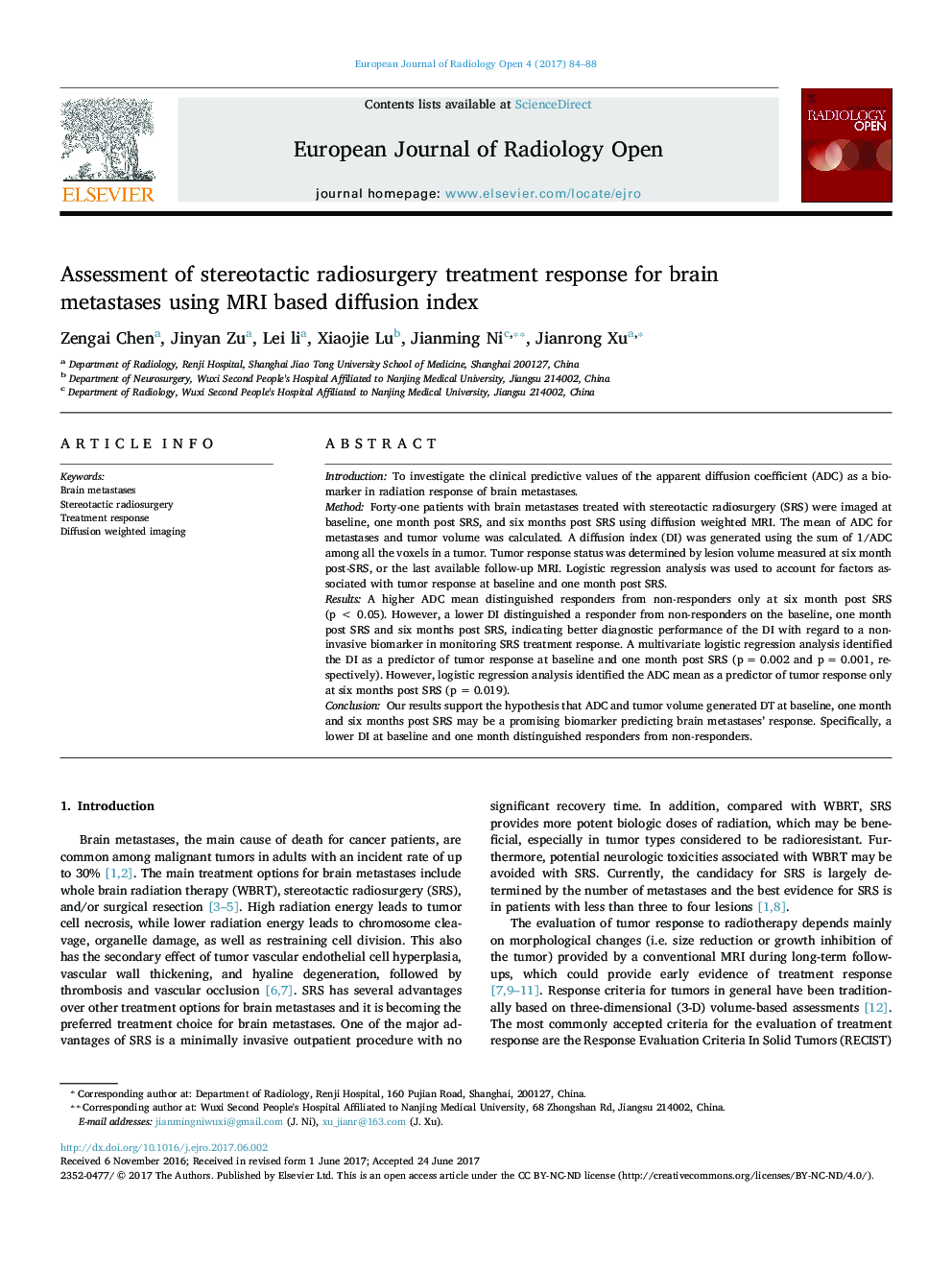| Article ID | Journal | Published Year | Pages | File Type |
|---|---|---|---|---|
| 5726437 | European Journal of Radiology Open | 2017 | 5 Pages |
IntroductionTo investigate the clinical predictive values of the apparent diffusion coefficient (ADC) as a biomarker in radiation response of brain metastases.MethodForty-one patients with brain metastases treated with stereotactic radiosurgery (SRS) were imaged at baseline, one month post SRS, and six months post SRS using diffusion weighted MRI. The mean of ADC for metastases and tumor volume was calculated. A diffusion index (DI) was generated using the sum of 1/ADC among all the voxels in a tumor. Tumor response status was determined by lesion volume measured at six month post-SRS, or the last available follow-up MRI. Logistic regression analysis was used to account for factors associated with tumor response at baseline and one month post SRS.ResultsA higher ADC mean distinguished responders from non-responders only at six month post SRS (p < 0.05). However, a lower DI distinguished a responder from non-responders on the baseline, one month post SRS and six months post SRS, indicating better diagnostic performance of the DI with regard to a non-invasive biomarker in monitoring SRS treatment response. A multivariate logistic regression analysis identified the DI as a predictor of tumor response at baseline and one month post SRS (p = 0.002 and p = 0.001, respectively). However, logistic regression analysis identified the ADC mean as a predictor of tumor response only at six months post SRS (p = 0.019).ConclusionOur results support the hypothesis that ADC and tumor volume generated DT at baseline, one month and six months post SRS may be a promising biomarker predicting brain metastases' response. Specifically, a lower DI at baseline and one month distinguished responders from non-responders.
